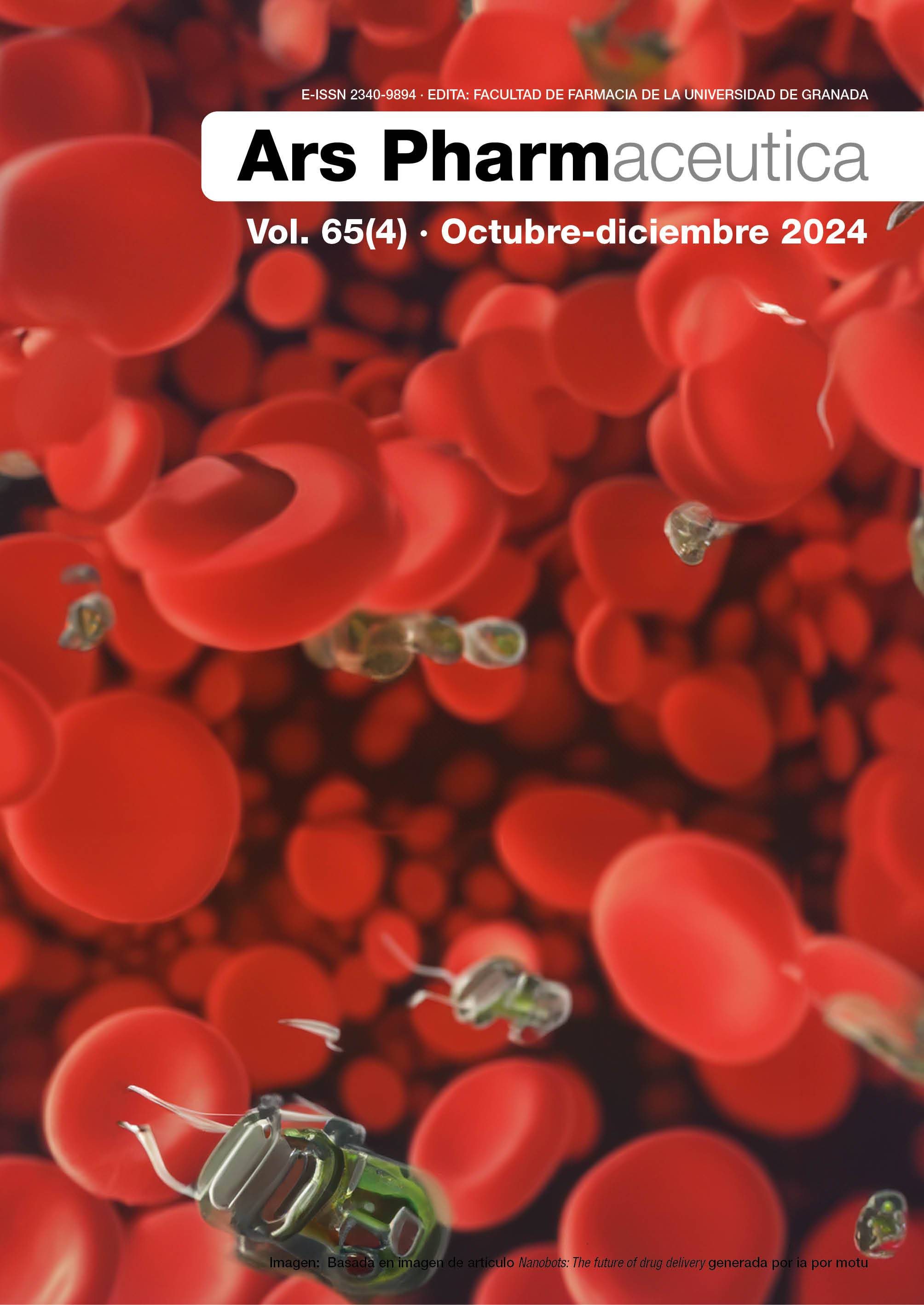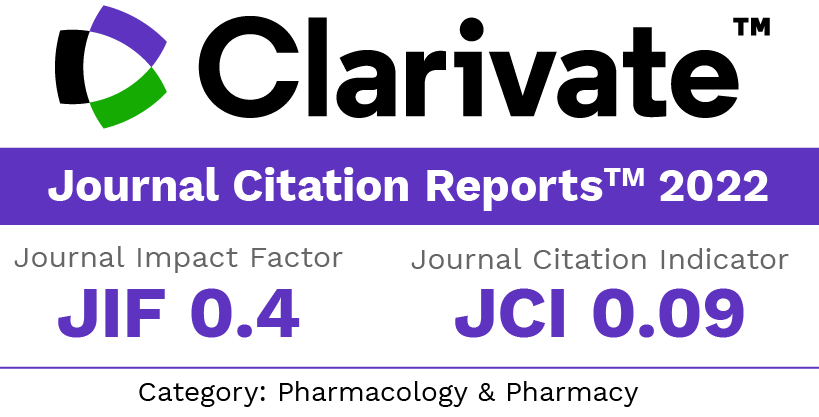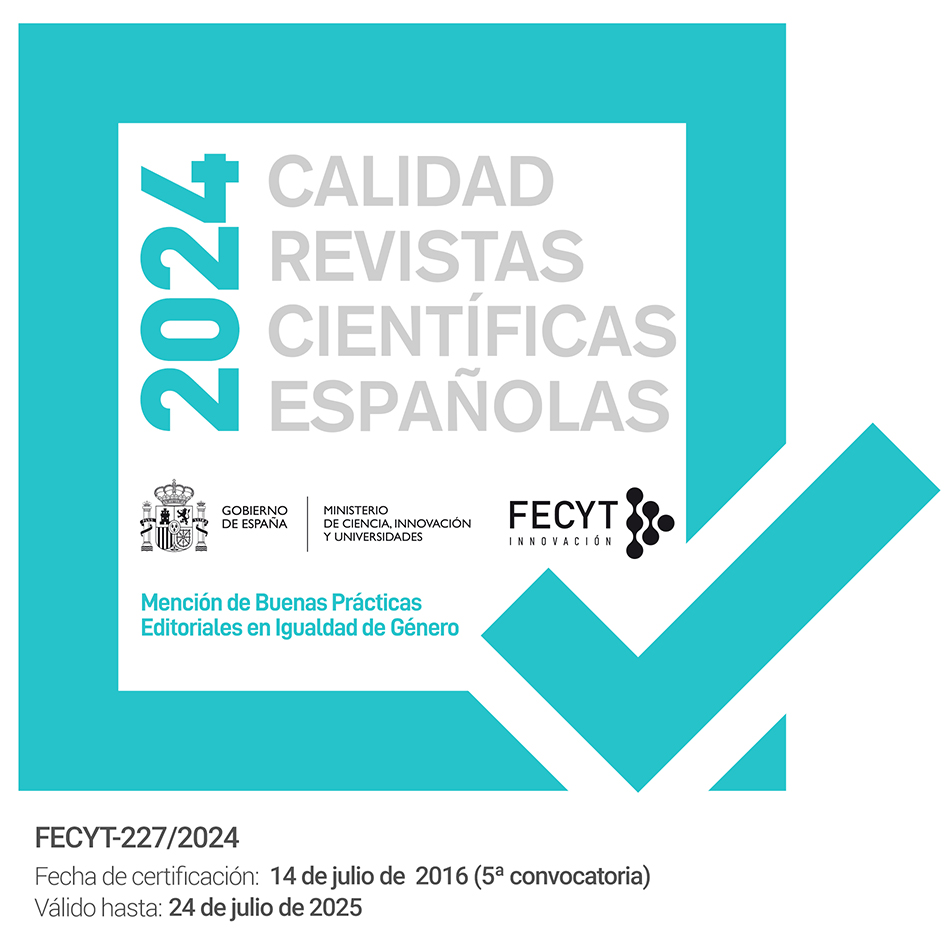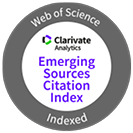Comparación de la estimulación por microvibración versus inhibidores de catepsina K a nivel molecular y celular: una revisión sistemática
DOI:
https://doi.org/10.30827/ars.v65i4.30321Palabras clave:
hueso, osteoclasto, osteoporosis, enzima, catepsina, tratamientoResumen
Introducción: El hueso está en remodelación constante para mantener la estructura del tejido óseo que lo compone. Este es susceptible a cambios que pueden ser tanto favorables como perjudiciales, marcados por ciertas variables como lo son la edad, sexo, enfermedades, alteraciones hormonales, traumas, entre otras
Método: Debido a lo anterior se planteó la idea de estudiar que tratamiento es mejor en la regeneración del tejido óseo, comparando tratamientos farmacológicos (inhibidores de la catepsina K) contra tratamiento de estimulación micro-vibratoria o no farmacológicos.
Objetivo: Realizar una revisión sistemática de tratamientos con microvibraciones e inhibidores de la catepsina K en relación con la remodelación ósea. Para realizar una comparación entre la efectividad del tratamiento basado en micro-vibraciones y con inhibidores de la catepsina K, se realizó una revisión sistemática en nueve bases de datos (Wiley Online Library, Pubmed, Google Academic, Scopus, Science Direct, Scielo, Medline, EBSCO y SpringerLink).
Resultados: En este estudio se incluyeron 20 artículos, los cuales demostraron que ambos tratamientos mejoran el proceso de remodelado óseo.
Conclusiones: Tomando en consideración la revisión sistemática realizada, se ha determinado que el tratamiento de micro-vibraciones de baja intensidad alta frecuencia incrementa la cortical externa, sin embargo, el uso de inhibidores de la catepsina k, promete tratamientos innovadores en la regeneración del tejido óseo, no obstante, se requiere de más estudios en ambos tipos de tratamientos a nivel celular y molecular para determinar su mecanismo de acción.
Descargas
Citas
Aristizábal J. Ortodoncia acelerada y ortodoncia de transito expreso (OTE)®, un concepto contemporáneo de alta eficiencia. CES odontol. 2014; 27(1): 56-73.
Kafienah W, Bromine D. Human Cathepsin k cleaves native type I and II collagens at the N-terminal end of the Triple Helix. Biochem J. 1998; 33(3): 727-732 doi: 10.1042/bj3310727.
Page M, McKenzie J. La declaración PRISMA 2020: una guía actualizada para informar revisiones sistemáticas. BMJ. 2021; 372: n71. doi: 10.1136 / bmj.n71.
da-Costa-Santos C. The PICO strategy for the research question construction and evidence search. Rev Lat Am Enfermagem. 2007; 15(3): 508-511 Doi: 10.1590/s0104-11692007000300023.
Jadad AR. “Assessing the quality of reports of randomized clinical trials: Is blinding necessary?” Controlled Clinical Trials. 1996; 17(1): 1-12 doi:10.1016/0197-2456(95)00134-4.
Higgins J. Cochrane Handbook for Systematic Reviews of Interventions version 6.2 (updated February 2021). Cochrane. 2021; www.training.cochrane.org/handbook.
McGuinness L, Higgins J. Risk-of-bias VISualization (robvis): An R package and Shiny web app for visualizing risk-of-bias assessments. Res Syn Meth. 2020; 1- 7. doi: 10.1002/jrsm.1411.
García-López S, Villanueva R, Massó-Rojas F. Micro-vibrations at 30 Hz on bone cells cultivated in vitro produce soluble factors for osteoclast inhibition and osteoblast activity. Arch Oral Biol. 2020; 110(104594): 1-9 doi: 10.1016/j.archoralbio.2019.104594.
Higashi Y. Effect of low intensity pulsed ultrasound on osteoclast differentiation. Orthod Waves. 2020; 74(4): 163-169 doi: 10.1080/13440241.2020.1843354.
Cai J, Shao X. Differential skeletal response in adult and aged rats to independent and combinatorial stimulation with pulsed electromagnetic fields and mechanical vibration. FASEB J. 2020; 34(2): 3037-3050 doi: 10.1096/fj.201902779R.
Alikhani M. Therapeutic effect of localized vibration on alveolar bone of osteoporotic rats. PLoS ONE. 2019; 14(1): e0211004 doi: 10.1371/journal.pone.0211004.
Li X, Liu D, Li J. Wnt3a involved in the mechanical loading on improvement of bone remodeling and angiogenesis in a postmenopausal osteoporosis mouse model. FASEB J. 2019; 33(8): 8913-8924 doi: 10.1096/fj.201802711R.
Wu S, Zhong Z, Chen J. Low-magnitude high-frequency vibration inhibits RANKL-induced osteoclast differentiation of RAW264.7 cells. Int J Med Sci. 2012; 9(9): 801-807 doi: 10.7150/ijms.4838.
Zhou J, Li X, Liao Y, Feng W. Effects of electroacupuncture on bone mass and cathepsin K expression in ovariectomised rats. Acupunct Med. 2014; 32(6): 478-485 doi: 10.1136/acupmed-2014-010577.
Yamaguchi M, Hayashi M. Low-energy laser irradiation facilitates the velocity of tooth movement and the expressions of matrix metalloproteinase-9, cathepsin K, and alpha(v) beta(3) integrin in rats. Eur J Orthod. 2010; 32(2): 131-139 Doi: 10.1093/ejo/cjp078 .
Panwar P, Xue L. An Ectosteric Inhibitor of Cathepsin K Inhibits Bone Resorption in Ovariectomized Mice. J. Bone Miner. Res. 2017; 34(4): 777-778 doi:10.1002/jbmr.3227.
Liu H, Zhu R. Radix Salviae miltiorrhizae improves bone microstructure and strength through Wnt/β-catenin and osteoprotegerin/receptor activator for nuclear factor-κB ligand/cathepsin K signaling in ovariectomized rats. Int. j. phytother. Res. 2018; 32: 2487– 2500 doi: 10.1002/ptr.6188.
Yamashita T, Hagino H, Hayashi I. Effect of a cathepsin K inhibitor on arthritis and bone mineral density in ovariectomized rats with collagen-induced arthritis. Bone. 2018; 9: 1-10 doi:10.1016/j.bonr.2018.05.006.
Shi X, Li C. Drynaria total flavonoids decrease cathepsin K expression in ovariectomized rats. Genet Mol Res. 2014; 13(2): 4311-4319 doi: 10.4238/2014.June.9.17.
Ochi Y, Yamada H, Mori H. ONO-5334, a cathepsin K inhibitor, improves bone strength by preferentially increasing cortical bone mass in ovariectomized rats. 0542-x . J. Bone Miner. Metab. 2013; 13(6): 645–652 doi:10.1007/s00774-013-0542-x.
Yu N, Fathi A, Murphy C. Local co-delivery of rhBMP-2 and cathepsin K inhibitor L006235 in poly(D,L-lactide-co-glycolide) nanospheres. J Biomed Mater Res Part B. 2015 2015:00B:000–000.; 00(B): 0-8 Doi:10.1002/jbm.b.33481.
Suzuki N, Takimoto K, Kawashima N. Cathepsin K Inhibitor Regulates Inflammation and Bone Destruction in Experimentally Induced Rat Periapical Lesions. J Endod7. 2015; 41(9): 1474–1479 doi: 10.1016/j.joen.2015.04.013.
Yoshioka Y, Yamachika E, Nakanishi M. Cathepsin K inhibitor causes changes in crystallinity and crystal structure of newly-formed mandibular bone in rats. Br J Oral Maxillofac Surg. 2017; 56(8): 732-738 doi.org/10.1016/j.bjoms.2018.08.003.
Araújo AA. Azilsartan Increases Levels of IL-10, Down-Regulates MMP-2, MMP-9, RANKL/RANK, Cathepsin K and Up-Regulates OPG in an Experimental Periodontitis Model. PLoS ONE. 2014; 9(5): e96750 doi:10.1371/journal.pone.0096750.
Hao L, Zhu G, Lu Y. Deficiency of cathepsin K prevents inflammation and bone erosion in rheumatoid arthritis and periodontitis and reveals its shared osteoimmune role. FEBS Letters. 2015; 589(12): 1331–1339. doi:10.1016/j.febslet.2015.04.008.
Zhang W, Dong Z, Li D, Li B, Liu Y. Cathepsin K deficiency promotes alveolar bone regeneration by promoting jaw bone marrow mesenchymal stem cells proliferation and differentiation via glycolysis pathway. . Cell Prolif. 2021; 54(7): e13058 doi: 10.1111/cpr.13058.
Ren Z, Machuca-Gayet I. Azanitrile Cathepsin K Inhibitors: Effects on Cell Toxicity, Osteoblast-Induced Mineralization and Osteoclast-Mediated Bone Resorption. PLOS ONE. 2015; 10(7): e0132513 doi: 10.1371/journal.pone.0132513.
Bullitt EE. Expression of c-fos-like protein as a marker for neuronal activity following noxious stimulation in the rat. J Comp Neurol. 1990; 296(4): 517-530.
Zhao Q, Wang X, Liu Y, He A, Jia R. NFATc1: Functions in osteoclasts. Int J Biochem Cell Biol. 2010; 42(5): 576–579. doi:10.1016/j.biocel.2009.12.018.
Khosla S, Westendorf J, Oursler M. Building bone to reverse osteoporosis and repair fractures. J Clin Invest. 2008; 118(2): 421–428.
Rogers A, Saleh G, Hannon R, Greenfield G, Eastell R. Circulating estradiol and osteoprotegerina as determinants of bone turnover and bone density in postmenopausal women. J Clin Endocrinol Metab. 2002; 87: 4470-4475.
Wada T, Nakashima T, Hiroshi N, Penninger JM. RANKL–RANK signaling in osteoclastogenesis and bone disease. Trends in Molecular Medicine. 2006; 12(1): 17–25. doi:10.1016/j.molmed.2005.11.007.
Fujita S, Yamaguchi M, Utsunomiya T, Yamamoto H, Kasai K. Low-energy laser stimulates tooth movement velocity via expression of RANK and RANKL. Orthod Craniofac Res. 2008; 11(3): 143-155. doi: 10.1111/j.1601-6343.2008.00423.x. PMID: 18713151.
Panwar P. A novel approach to inhibit bone resorption: exosite inhibitors against cathepsin K. British Journal of Pharmacology. 2015; 173(2): 396–410. doi:10.1111/bph.13383 .
Hou W, Li W, Keyszer G, Weber E. Comparison of cathepsins K and S expression within the rheumatoid and osteoarthritic synovium. Arthritis Rheum. 2002; 46(3): 663-674. doi: 10.1002/art.10114.
Cheng T, Murphy C, Cantrill L. Local delivery of recombinant human bone morphogenetic proteins and bisphosphonate via sucrose acetate isobutyrate can prevent femoral head collapse in Legg-Calve-Perthes disease: a pilot study in pigs. International Orthopaedics. 2014; 38(7): 1527-1533.
Ren X. Highly selective azadipeptide nitrile inhibitors for cathepsin K: design, synthesis and activity assays. Org Biomol Chem. 2013; 11: 1143-1148.
Suda T, Nakamura I, Jimi E, Takahashi N. Regulation of osteoclast function. J Bone Miner Res. 1997; 12(6): 869-879.
Ventura-Orriols E, Biosca-Adzet C. Utilidad del propéptido amino-terminal del procolágeno tipo 1 (P1NP) como marcador de remodelado óseo en el paciente sometido a trasplante renal. Rev del Lab Clin. 2009; 2(2): 80-86.
Garlet G. Destructive and Protective Roles of Cytokines in Periodontitis: A Re-appraisal from Host Defense and Tissue Destruction Viewpoints. J Dent Res. 2010; 89(12): 1349-1363.
Guo Y, Li Y, Xue L, Severino R, Gao S, Niu J. salvia miltiorrhiza: an ancient Chinese herbal medicine as a source for anti-osteoporotic drugs. J Ethnopharmacol. 2014; 155(3): 1401-1416.
Wang C, Stashenko P. The role of interleukin-1 alpha in the pathogenesis of periapical bone destruction in a rat model system. Oral Microbiol Immunol. 1993; 8(1): 50-56.
Descargas
Publicado
Cómo citar
Número
Sección
Licencia
Derechos de autor 2024 Yomira Salgado Martínez

Esta obra está bajo una licencia internacional Creative Commons Atribución-NoComercial-CompartirIgual 4.0.
Los artículos que se publican en esta revista están sujetos a los siguientes términos en relación a los derechos patrimoniales o de explotación:
- Los autores/as conservarán sus derechos de autor y garantizarán a la revista el derecho de primera publicación de su obra, la cual se distribuirá con una licencia Creative Commons BY-NC-SA 4.0 que permite a terceros reutilizar la obra siempre que se indique su autor, se cite la fuente original y no se haga un uso comercial de la misma.
- Los autores/as podrán adoptar otros acuerdos de licencia no exclusiva de distribución de la versión de la obra publicada (p. ej.: depositarla en un archivo telemático institucional o publicarla en un volumen monográfico) siempre que se indique la fuente original de su publicación.
- Se permite y recomienda a los autores/as difundir su obra a través de Internet (p. ej.: en repositorios institucionales o en su página web) antes y durante el proceso de envío, lo cual puede producir intercambios interesantes y aumentar las citas de la obra publicada. (Véase El efecto del acceso abierto).
























